Editor’s Introduction to Not Nothing (excerpt)Elizabeth Zuba
excerpts, 04/17/14
Originally published in Not Nothing: Selected Writings by Ray Johnson, 1954–1994, edited by Elizabeth Zuba. All rights reserved. © 2014 Elizabeth Zuba and Siglio Press.
You’re involved in an idea of Zen nothingness and yet your life is a kind of constant happening?
Well, yes. And I also continue to ponder that idea I have for graffiti, and spray cans, for using a white spray can to write the word “shit” on the graffiti . . . it would be all in the way I’d make that “S” with my spray can, and then I’d write the word “shit” and cross the “t” and dot the “i” and this calligraphy would relate to the graffiti calligraphy. I’ve thought already about any number of possibilities, and I wouldn’t, for example, put white on white graffiti, but I’d put white on colored graffiti, there’d have to be various planes involved.1
I deal in invisibilities and anonymities.2
It can be said that language, any language, is essentially viral in nature, strings of code that make repeated copies of themselves. The language of our parents encodes mitotically on our tongues, the language of our families, cultures, generations. How much of how we think and act is encoded by what and how we read and speak is a well-worn question of semiotics for which I think I can safely say Ray Johnson had little interest or patience. But the action of codes—the actual copying, multiplication, permutation and dispersion of language—was of primary interest to Johnson and one of the driving forces behind his work.
The thing about yielding to the viral character of language (and operating in its self-replicative belly) is that if you see language as something that is by and large not your own but rather an entity that mutates through you, then you also see the personal expression of, or dominion over, language as an illusion. And if expression through language is an illusion, then the not-there, the behind-the-illusion, the void, is necessarily the essential structure of language, perhaps of all symbols of expression.3 Johnson’s letters reveal this conviction. And this approach to individual expression, indeed to identity, is critical to understanding his work—illusion, the elusive, the ephemeral and the void are the essential form and content of Johnson’s writings and mail art. Johnson didn’t dwell on the surface of words to draw attention to the meanings or essence beneath them, in say the line of Ezra Pound à la Fenellosa; on the contrary, Johnson’s shifting about in the plastic surface of language does quite the opposite: it acts to reveal that there is in fact nothing beneath words at all, nothing but more coding—no deeper, truer signification (the one right color), but infinite signification, and in infinite signification, void (the white or invisible “shit” in the various color planes).4
Please understand that the nature of my work, its split-ness between what is a true attempt at statement and the echo failure.5
Ray Johnson was that rare hybrid of brilliant, prolific artist and elusive ascetic out of which legends are made, but his elusiveness or inscrutability was not an affected persona—many of Johnson’s closest friends express the feeling that they could never really know him; that conversation and interactions with Johnson frequently felt like a construct of sorts; that there was a certain distance that could not be traversed.6 William S. Wilson, an exceptional scholar of Ray Johnson’s work, and one of his oldest friends, has written, “The Outer man was just about all one was going to know about the Inner man.”7 Nevertheless, with unmerited hubris, I believed that, in editing this book, if I steeped myself long enough and deeply enough in his artwork, his writings, his letters, drafts, notes and personal library, I would get to know the real Johnson, his real thoughts, the narrator first person “I” composer under it all. Wrong. I could not find him, the singular him, instead I found the very real them, and nothing. What I discovered about Johnson’s person is what has to be the most obvious assessment anyone could ever make about his work—the discrete “I” doesn’t exist. There are multiple, oblique and shifting narrators in Johnson’s epistolary writings and personal notes, and this seems to be a natural extension of Johnson’s perception of himself and his reality—a blurring of entity (singular thing/being) and infinity (boundless no-thing/being). Multiplicity and distance or void wasn’t an affected practice on Johnson’s part; they were the very lenses of his reality.
I feel … nothingness—with the accent on the positive! 8
In 1951, Ray Johnson moved into an apartment on the lower east side with Richard Lippold and next door to friends John Cage and Morton Feldman. Though “nothingness” was likely already rooted in Johnson’s perception of himself and the world around him, it was during the Boza Mansion years (as they dubbed the building) that Johnson, alongside Cage and Feldman, developed a strong interest in Zen philosophy and sunyata, the Zen ideal of emptiness (sometimes translated as spaciousness or openness, though Johnson clearly preferred the concept of “Nothing”).9 This spiritual, or simply ontological, perspective is one that Johnson sustained over the course of his lifetime. “The more one eliminates the more logical life seems to become. I feel it may be possible some day to eliminate EVERYTHING.”10
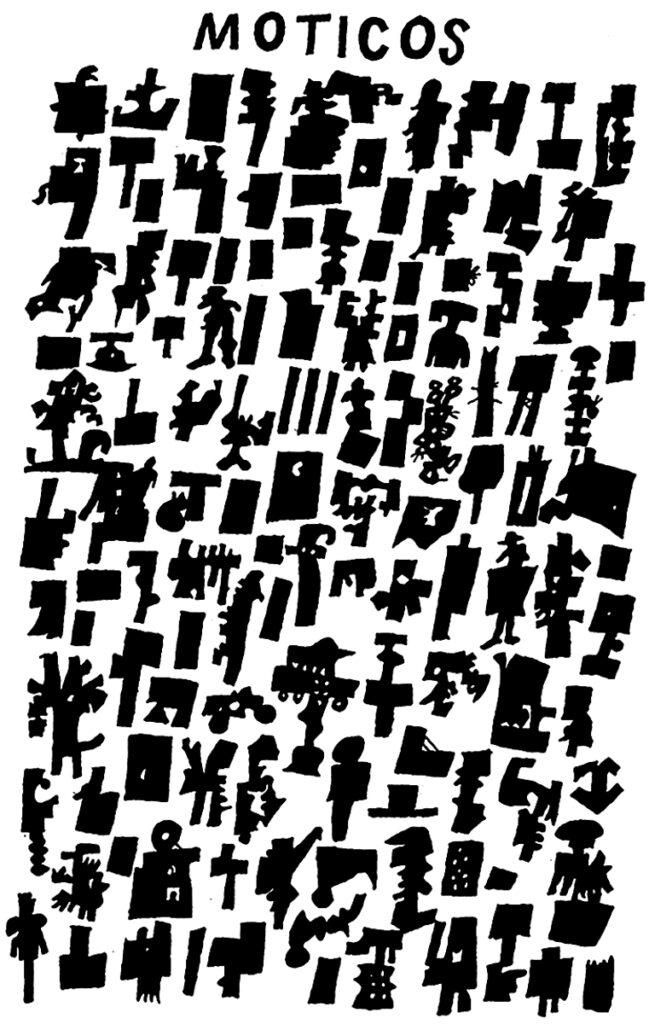
Plate 6 in Not Nothing: Selected Writings by Ray Johnson, 1954–1994, Siglio, 2014. All rights reserved. Image courtesy of Richard L. Feigen & Co.
The energetic void is articulated in Johnson’s writings for the first time (or at least one of the first times by my research) in Johnson’s 1954 piece “What is a moticos?” Johnson had coined this anagrammatic term for “osmotic” with his friend Norman Solomon earlier that year, a term that takes the notion of physical fluidity and infuses it linguistically with the unfixed and unpredictable nature of things—including letters themselves. Johnson used “moticos” to refer to both his writings and collage works over the next five to six years. “Whether the train is standing still or speeding past you, a moticos. Don’t try to catch up with it. It wants to go its own way. But have your camera ready to snap its picture. It likes those moments of being inside the box. When your film is printed and the moticos is finally seen, it will not be seen, unless you paste the photograph of the moticos on the side of a box car so someone can see the moticos or take its picture. … Perhaps you are the moticos. Destroy this.”11 It seems to me that Johnson uses the term “moticos” in this piece to address the void at the heart of all symbols, beings or things—the void is its own force; the void can’t be expressed but only pointed to; and then, he writes, if the void is you, destroy this. This last part is a curious statement (and by the very nature of Johnson’s work, any interpretation is as good as the next; true, too, for the entirety of my words here),12 but I read this as: “you” (any person) are no more than a pasted image of the void on the void; destroy or consume this discrete and static picture as much as you can. “Void yourself at all times as you see me void.” 13 From 1954 onward, void continues to be foregrounded as its own articulation in various ways through Johnson’s writings—the (hum), the (space), John Doe, Nothing, death, disruption, detachment, descriptions of space around words and images. But Johnson’s expression of nothingness far exceeds the direct references in this selection. It is the latent void in boundless, shifting voices, in multiplication and dispersion, in the beginning again and again/repetition, the latent void of language/symbol that is most palpable.14
footnotes
- Ray Johnson quoted in Henry Martin, “Should an Eyelash Last Forever? An Interview with Ray Johnson,” Lightworks 22 (2000): 55.
- Ray Johnson quoted in William S. Wilson, introduction, The Paper Snake by Ray Johnson (New York: Something Else Press, 1965).
- I believe this interpretation can be definitively applied to all symbols of expression (the graphic, the gesture, etc.) for Johnson, but I will limit my thoughts here to the alphabetic, with the understanding that the verbal, visual, cognitive, physical and intangible are necessarily interdependent elements of the larger nexus of Johnson’s correspondence.
- After writing this introduction, I came across a poem by Diane di Prima to Johnson (1995) describing Johnson’s enactment of the (painted) white void. These are the first two stanzas:
To Ray Johnson
I can’t imagine what you thought you were doing
what was the point of jumping off that bridge
after so many years of playing it cool
w/yr mail art & collage
N.Y. success & enigmatic smileI remember you once painted yr apartment white
the floor the -ceiling the windows all yr collages
all the same size in stacks all painted white
wasn’t that enuf?(Warholstars.org, 1995)
- Ray JohnsonNot Nothing: Selected Writings of Ray Johnson, 1954–1994, (Los Angeles: Siglio, 2014), plate 104.
- “Now that I think of him after his death, I don’t think I really knew who he was. It’s very hard for me to say that. But who was this man? He kept so much of himself to himself” Richard Lippold in How to Draw a Bunny, directed by John W. Walter (New York: Mr. Mudd Productions and Palm Pictures, 2002), film.
- William S. Wilson, “With Ray: The Art of Friendship,” Black Mountain College Dossiers No.4: Ray Johnson (North Carolina: Black Mountain College Museum and Arts Center, 1997), 14.
- Ray Johnson, “Home Thoughts from the Sermons of Dr. George Dunn as compiled by Robert Nichols for the Hardware Poets Playhouse,” 1963, quoted in Wilson, “With Ray: The Art of Friendship,” 57.
- On sunyata in the Heart Sutra: “Whatever is form, that is emptiness, whatever is emptiness, that is form, the same is true of feelings, perceptions, impulses and consciousness” (Edward Conze, Buddhist Wisdom: The Diamond Sutra and The Heart Sutra [New York: Vintage, 2001], 81).
- Johnson, “Home Thoughts from the Sermons of Dr. George Dunn,” 57.
- Johnson, Not Nothing, plate 1.
- “[Talking to Johnson was] an unforgettable lesson in anything goes art history. Unable to keep up with Johnson’s imaginative leaps and encyclopedic erudition, I missed more in his art than I ever yet saw” (Charles Stuckey, introduction, Dear Ray Johnson, edited by Frances F. L. Beatty [New York: Richard L. Feigen & Co., 2010], 1).
- Johnson, “Home Thoughts from the Sermons of Dr. George Dunn,” 57.
- “‘Nothing’ was important to him. Nothings were one of his art forms. And he draws us into places where ordinary words and their ordinary meaning go into suspension” (Henry Martin, in conversation with the editor, January 2014).
see also
Books
Not NothingSelected Writings, 1954–1994Edited by Elizabeth Zuba with an essay by Kevin Killian
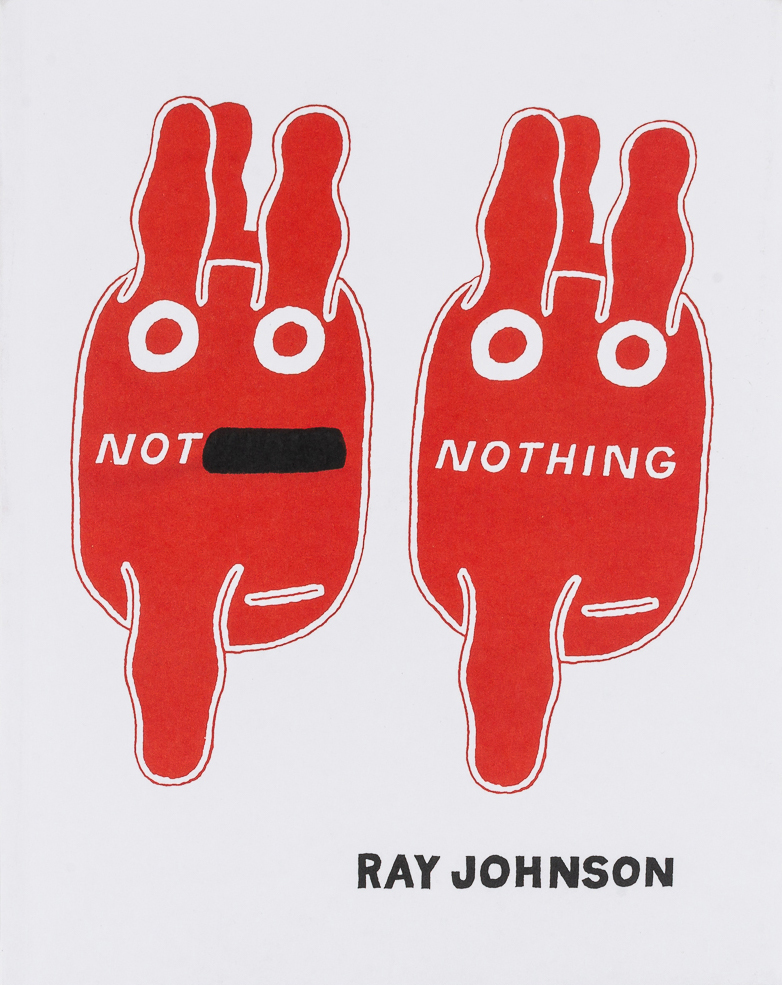
Excerpts
A Ray Johnson Story (excerpt)from Not Nothing: Selected Writings by Ray JohnsonKevin Killian
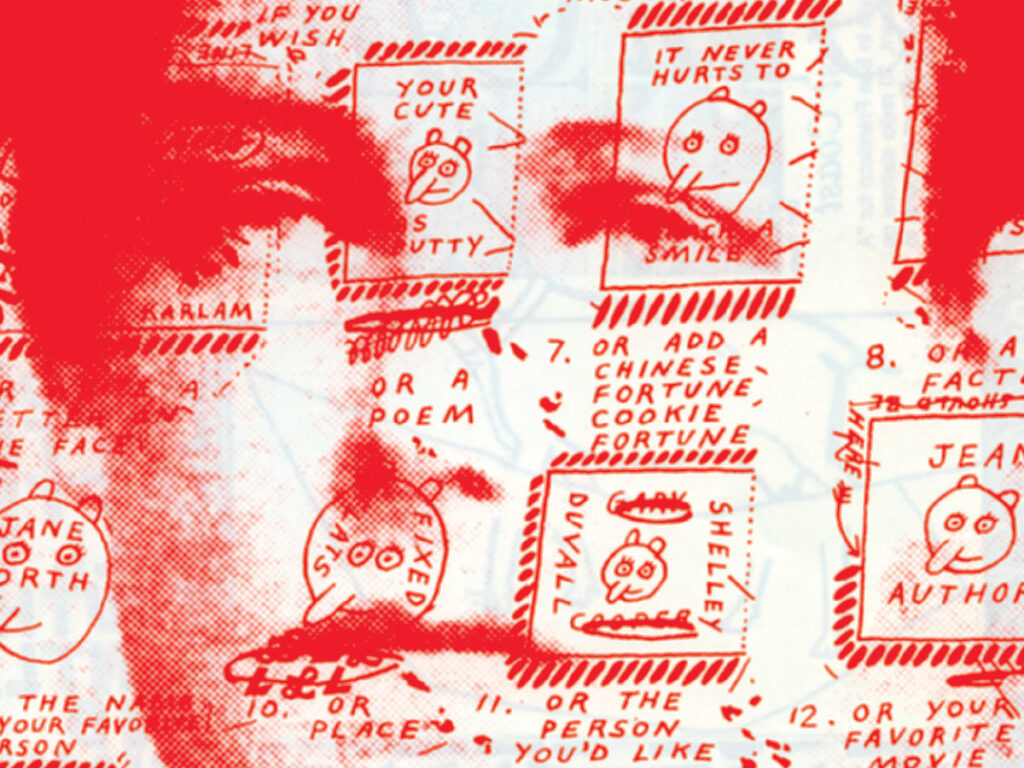
Reviews
Ray Johnson Reviews + Ray Johnson Reviewed(fifty years ago today)
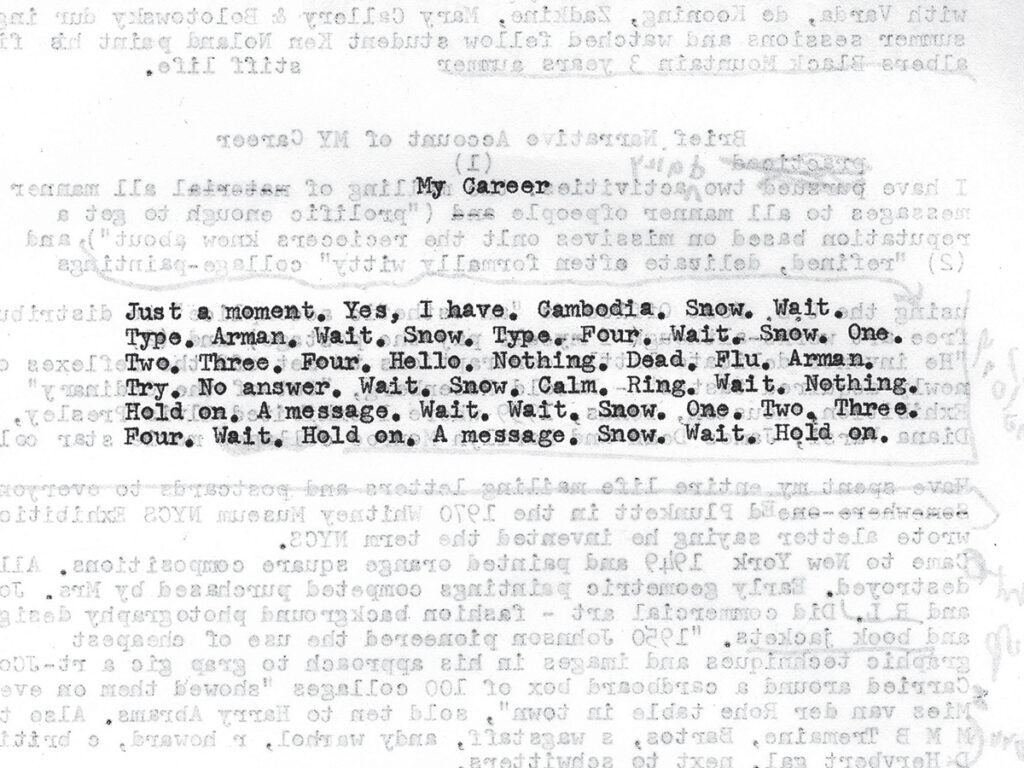
Affinities
Ray Johnson, Ray Johnson, Billy Ray JohnsonA Multitude
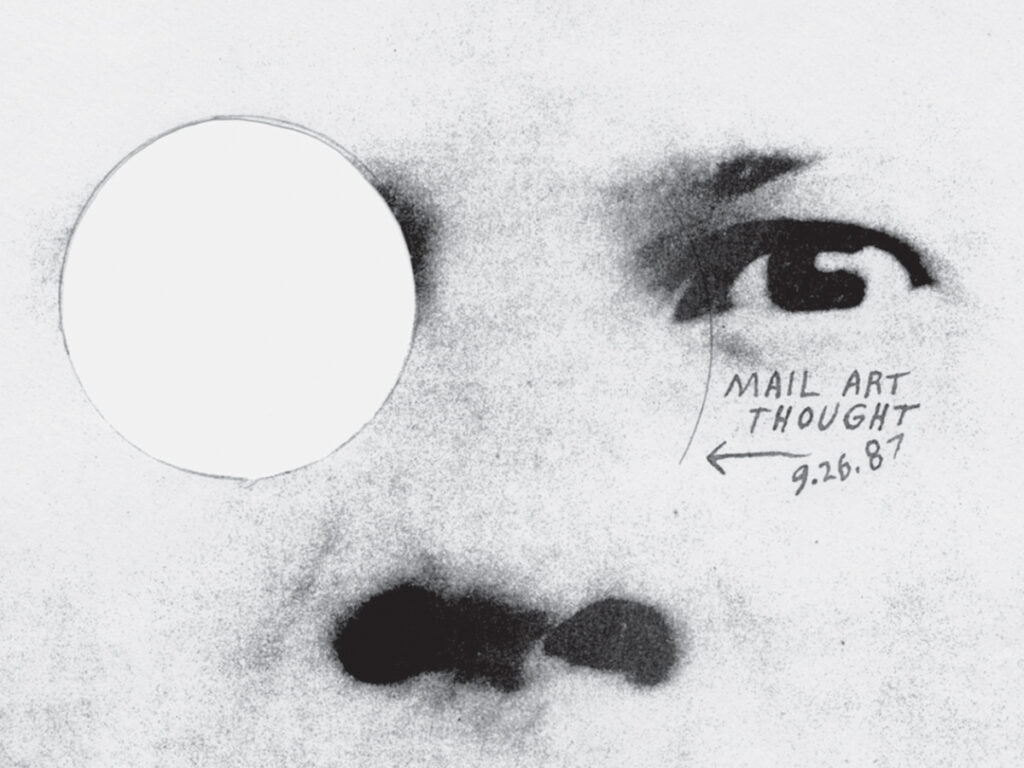
✼ ex libris:
“Multiplicity and distance or void wasn’t an affected practice on Johnson’s part; they were the very lenses of his reality.” —Elizabeth Zuba, from her introduction to Not Nothing: Selected Writings by Ray Johnson
[...]